indonesia's straw hat rebellion
when anime pirates become the banner of a real people’s uprising
In One Piece, pirates aren’t just criminals. They’re outcasts who challenge corrupt empires, chasing freedom with nothing but loyalty to their crew. That’s why, in Indonesia today, thousands are marching under the Straw Hat flag. The skull in a straw hat that symbolizes Monkey D. Luffy’s band of misfits. To outsiders, it might look like a pop-culture joke. But in Jakarta and across the archipelago, it has become the most potent symbol of defiance against a political class that grows fat while the people scrape by.
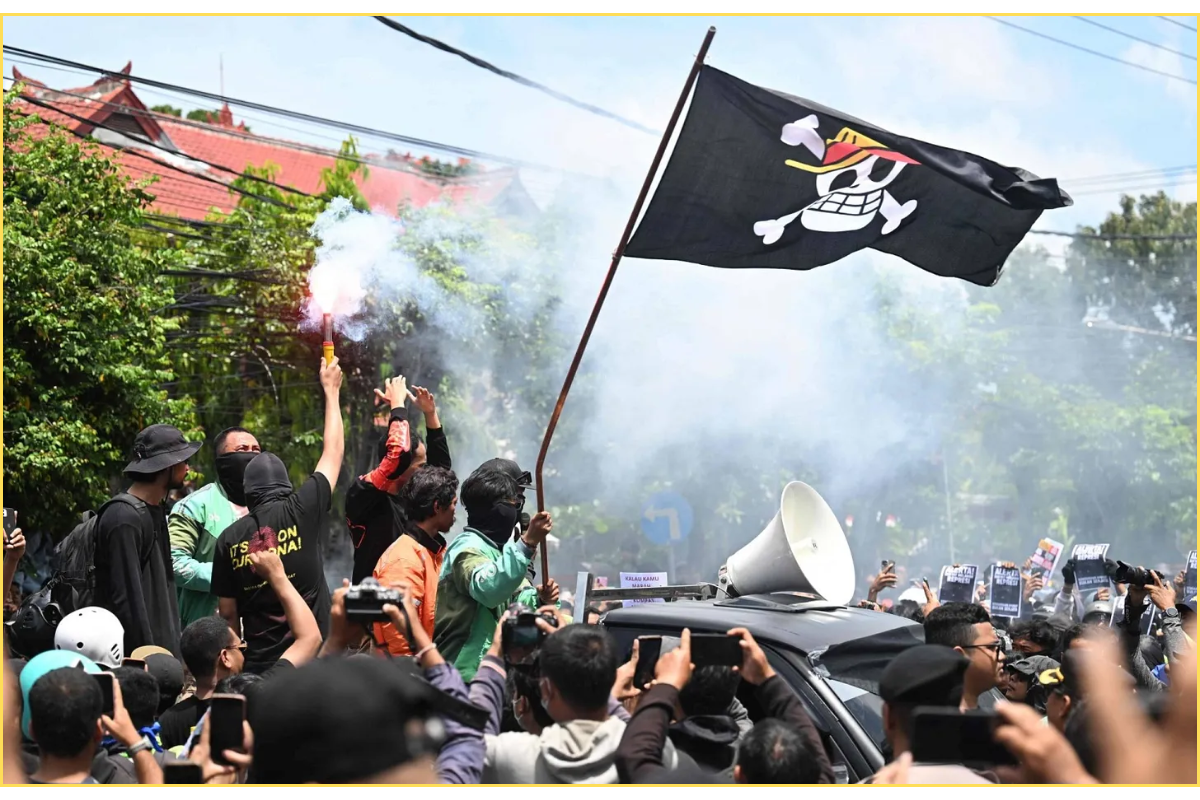
The immediate spark was parliament’s shameless decision to grant its members a housing allowance nearly ten times the minimum wage in Jakarta. For a country where millions work precarious jobs just to survive, this was more than arrogance, it was insult. Then came the killing of Affan, a 21-year-old delivery driver crushed beneath a police armored vehicle during a demonstration. He was not an activist, not a known political figure, just a young worker hustling for his daily bread. He was also, crucially, too young to be carrying the burden of a broken system on his back. His death crystallized the anger of an entire generation. What began as outrage over perks quickly transformed into a nationwide rebellion.
The choice of the Straw Hat flag is not accidental. It speaks a language young Indonesians understand, and that is freedom against tyranny, solidarity across differences, and the refusal to bow to elites. In the world of One Piece, the so-called World Government is an empire that protects the powerful and silences dissent. Protesters see the same pattern in their own lives, an alliance of politicians, businessmen, and generals who trade power among themselves while demanding ordinary citizens tighten their belts. The flag says what many cannot. We are a crew, and we will not be ruled as subjects.
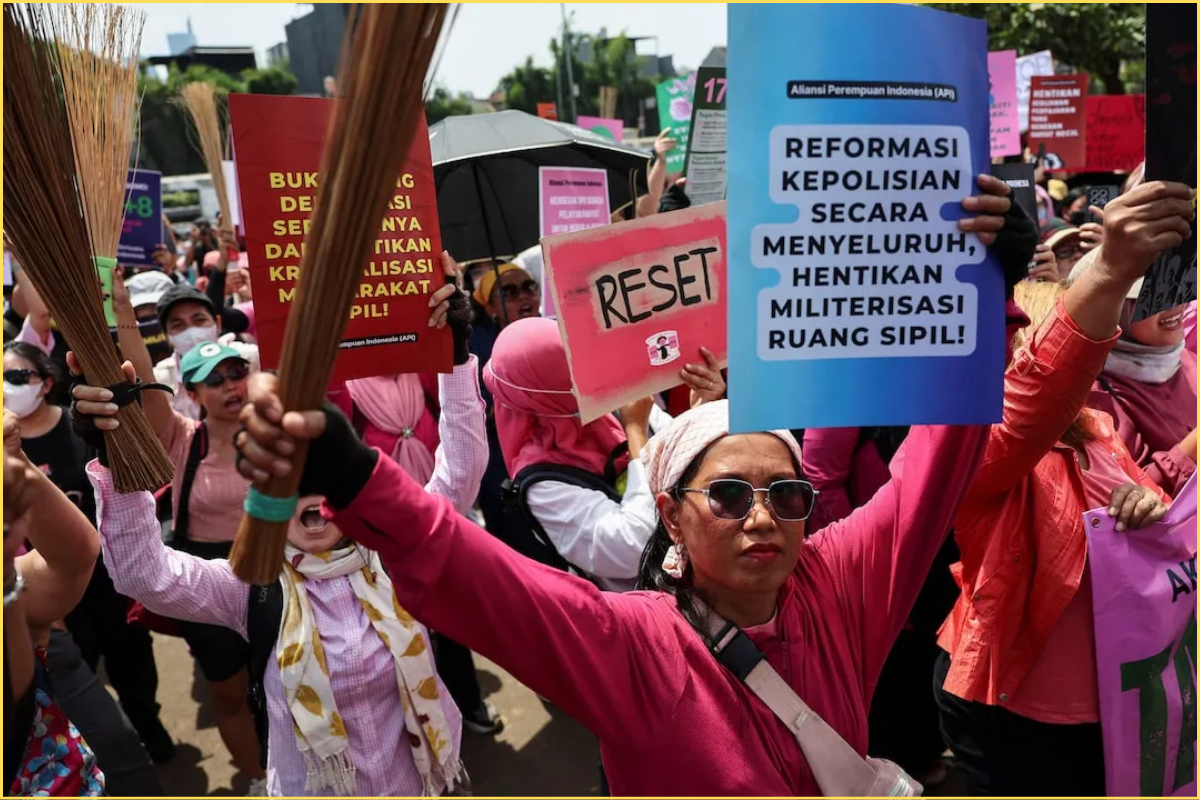
Above this uprising looms President Prabowo Subianto, a man whose career embodies the continuity of Indonesia’s old order. Once Suharto’s son-in-law and a commander of special forces implicated in the abductions of pro-democracy activists in the 1990s, he has been repackaged as a grandfatherly leader. Joko Widodo (nicknamed “Jokowi”), often branded internationally as the “Indonesian Obama” and once hailed as the face of a new democratic era, brought Prabowo into his cabinet, softened his image, and ultimately endorsed him as successor. Jokowi’s own son, still in his mid-thirties and who was still technically too young to qualify, was elevated to the vice presidency after a pliant court rewrote the rules. This maneuver sealed the dynasty’s place in the arrangement. What passes for democracy is, in reality, a bargain. The return of the general, the preservation of a family legacy, and the quieting of dissent.
Prabowo’s story is also Indonesia’s post-independence story. He was trained in the U.S., courted by Western powers during the Cold War, and long suspected of being the kind of figure intelligence agencies could work with. In the late 20th century, the CIA played its part in shaping Indonesia’s politics, supporting Suharto’s bloody consolidation of power in 1965 and benefiting from Jakarta’s role as a bulwark against communism. Declassified documents confirm how the U.S. helped provide intelligence on leftists who were then massacred (estimates of the death toll range from 500,000 to more than one million people). That shadow never fully disappeared. Today, as Indonesia flirts with BRICS membership and deeper ties to China, new suspicions emerge, is America once again meddling in the archipelago’s politics, this time not to support but to destabilize? The idea goes that Washington’s former man in Jakarta is now drifting toward Beijing, and that cannot be tolerated (amid the unrest, Subianto even canceled a high‑profile trip to Beijing for the September 3 Victory Day parade). Better to spark unrest as a warning than risk losing Indonesia to the other camp. Many believe this is part of Washington’s strategy, to divide ASEAN and undermine Indonesia’s China pivot. Why? Because if ASEAN remains united, it could act as a regional counterweight and negotiate collectively with both the U.S. and China. But if Washington can fracture ASEAN, it becomes easier to peel off individual countries with military aid, trade deals, or security guarantees. And there is no better target than Indonesia itself. The most populated, most powerful, and the largest economy and military in ASEAN. A divided bloc cannot resist pressure or act with one voice, making it harder for China to expand its influence and easier for the U.S. to manage the region on its own terms.
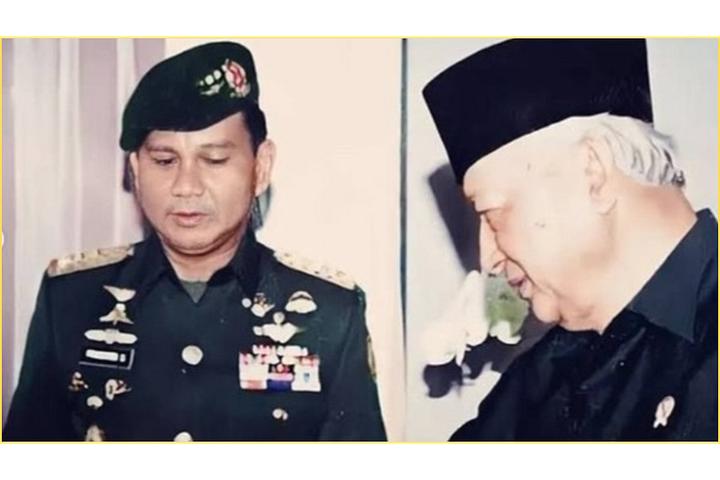
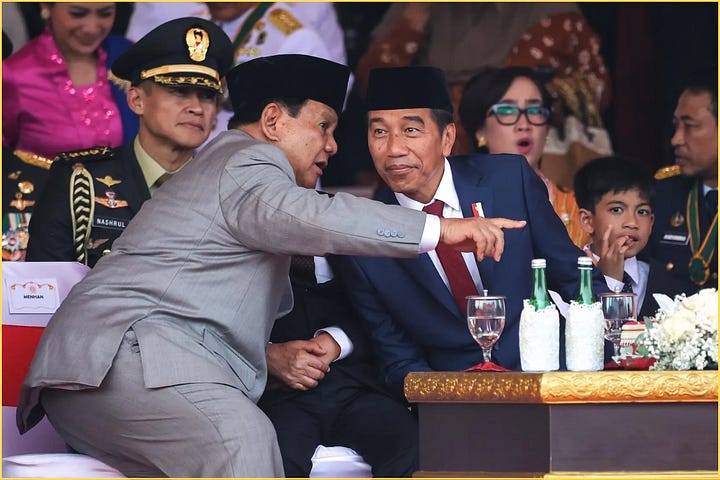
For the people in the streets, however, they see a government enriched by Chinese investment in nickel, copper, and bauxite, while food and housing costs climb beyond their reach. They believe elites pocket the profits from business monopolies and booming sectors like tourism, while ordinary Indonesians are left with little to show for the country’s growth. Police crush protests in the name of stability, and lawmakers treat public money as their own inheritance. They see a state willing to invoke treason and terrorism charges against citizens whose only crime is waving a pirate flag. And they see in Affan’s death the truth of their own vulnerability, that the lives of workers mean little when power is threatened.
The uprising is leaderless, decentralized, and unpredictable. It does not speak the language of established parties or NGOs. It borrows its imagery from anime, its slogans from online culture, and its determination from the streets. For a young person living in say Jakarta, the appeal is obvious, daily life means hours stuck in traffic, sky‑high rent for a cramped kos (a tiny boarding room rented month to month), rising food prices, and the constant sense that opportunity belongs only to the well‑connected. Work is precarious, wages stagnate, and the promise of a better future feels distant. Joining the protests is not just a political choice, it is a matter of survival, a chance to shout back at a system that dismisses them. To call it frivolous is to misunderstand it. The Straw Hat rebellion is not about cartoons. It is about dignity in a nation where dignity is denied, and about demanding back what has been stolen by generations of elites. It is not a plea for more, but a refusal to accept less, a declaration that the wealth and future of Indonesia belong to its people, not to the dynasties that hoard power while preaching sacrifice to everyone else.
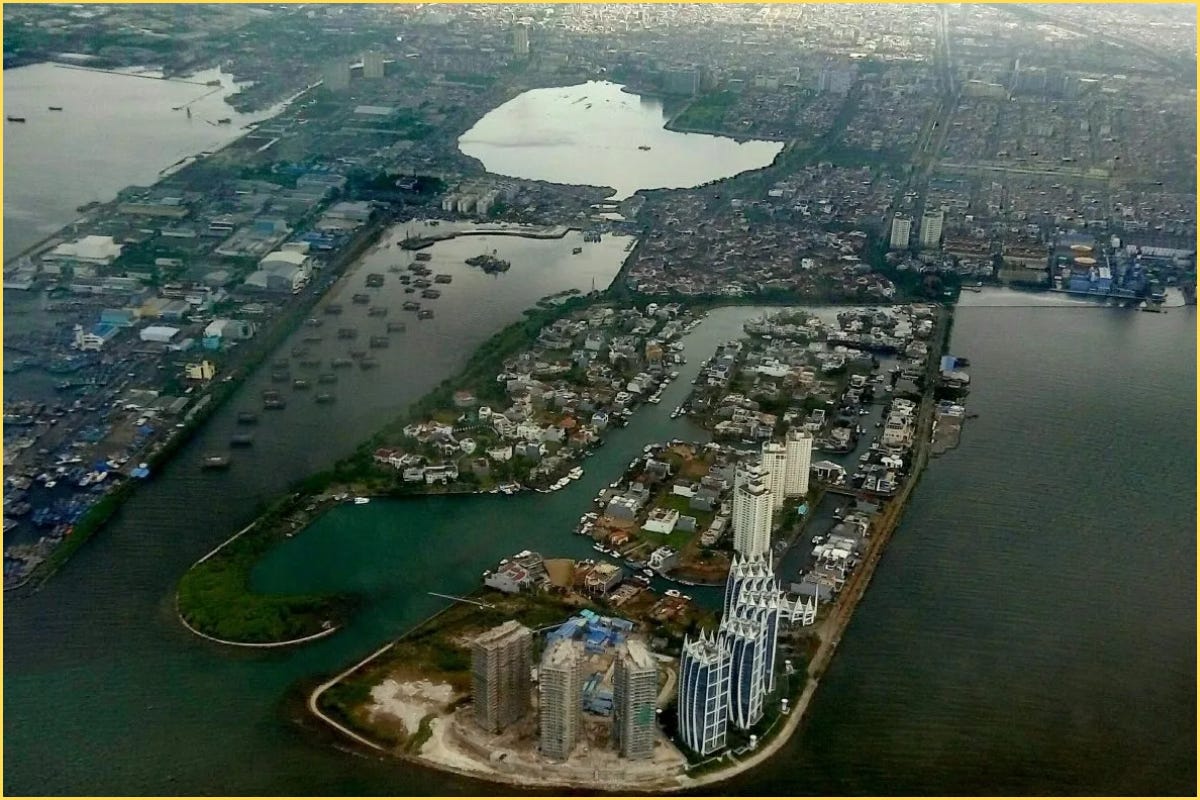
Indonesia has been here before. In 1998, students and workers toppled Suharto’s dictatorship, believing they had buried the old order once and for all. But the generals and their networks never left. They waited, they adapted, and now they rule again. Prabowo himself was part of the machine that cracked down on those who dared to demand reform, but despite that history he has managed to climb back to the summit of power. Over the years he rebranded from feared general to avuncular elder statesman. With Jokowi bringing him into the cabinet and state media painting him as a loving bapak figure (“bapak” meaning father, a common term for a paternal leader) his image was softened and his past was blurred. That history now collides with the present, as a younger generation finds itself repeating the fight of its parents. Many ask why people accepted his return at all. Years of propaganda and state media framing convinced voters to overlook the brutal record behind him. Indonesians longed for stability and a decent shot at life, but instead were sold the illusion of a caring bapak. By elevating Prabowo and smoothing his way back to power, Jokowi betrayed the democratic hopes he once embodied, he betrayed Indonesia.
The conspiracies circulating today, about CIA hands in the protests, about shadowy contracts, even about targeted killings of Indonesian officials abroad, fit naturally into Indonesia’s political imagination. The country has long seen foreign powers and domestic elites work hand in hand, so such stories gain traction easily. Whether true or exaggerated, they reveal a deep mistrust of official narratives. When Zetro Leonardo Purba, a 40‑year‑old chancery officer at Indonesia’s embassy in Lima, was shot dead on his bicycle in what Peru’s government called a contract killing, of course it did not seem random. Nothing was stolen, and footage showed the attackers lying in wait. The incident looked less like ordinary crime and more like a warning tied to Indonesia’s tilt toward China and BRICS. A reminder that geopolitics has real consequences.
But even if the protests at home were sparked or nudged by the CIA, I argue that it could still be a good thing, because its proof that America is scared and desperate. They have been tied up for too long in the Middle East. They never committed to it’s much‑touted pivot to Asia, and now making clumsy, late moves to catch up. Indonesians can seize that moment, continue to fight and demand, and shape a future without elites, generals, or foreign intelligence pulling the strings. The movement carries the potential to break the grip of entrenched powers, using the cracks in the system to turn outside interference against itself and ensure they all lose. The movement has the potential to break the grip of political elites by turning the missteps of outside powers against them, making sure they all lose.
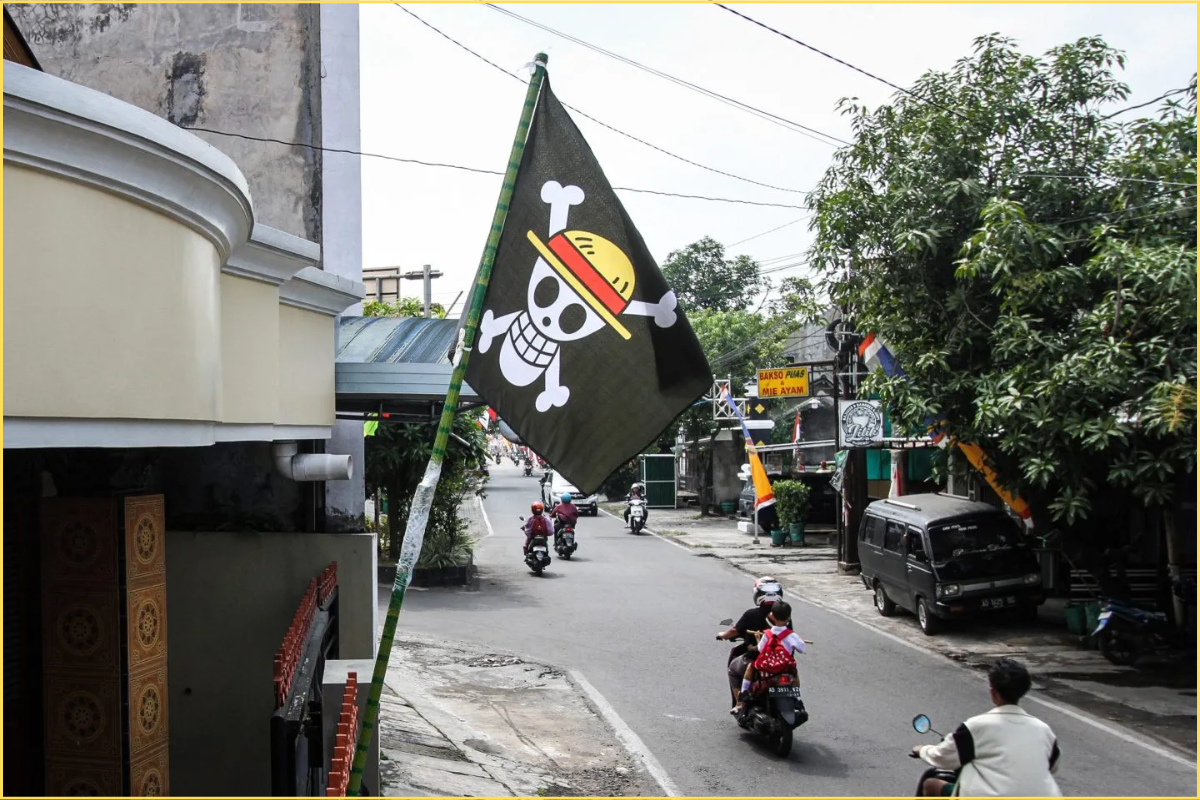
To an outsider, the sight of anime flags waving in the streets may look absurd. But in Indonesia, those flags declare a truth older than any cartoon, that empires fall when the people stop believing in them. The Straw Hat is no longer fiction. It is a warning to the powerful that their rule will not last, that no dynasty, general, or foreign backer can resist the people once they decide otherwise. And it is a promise, whispered across campuses and kampungs (urban neighborhoods or villages where working-class Indonesians live) that the crew is ready to sail without them.


